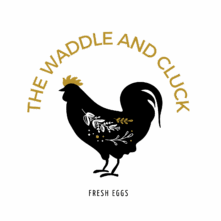Cowbirds are permanent residents throughout Oklahoma. They are common and in winter can be seen in flocks along with other blackbirds. Their full name is brown-headed cowbird to distinguish them from two other cowbirds that occur in the United States.
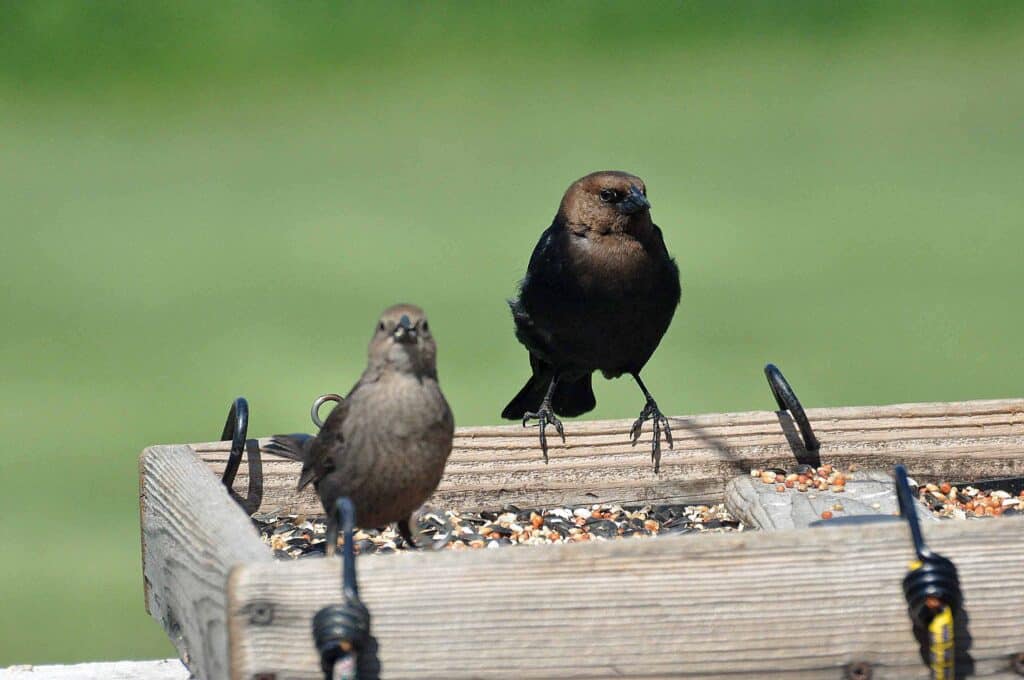
Why are they called cowbirds? It’s because they follow grazing animals, like cattle and other livestock in search of insects. Cowbirds do not build nests, and the female lays her eggs in the nests of other birds and the foster parents raise the young. She will lay one egg per nest and is able to lay up to three dozen eggs. This behavior is referred to as nest or brood parasitism.
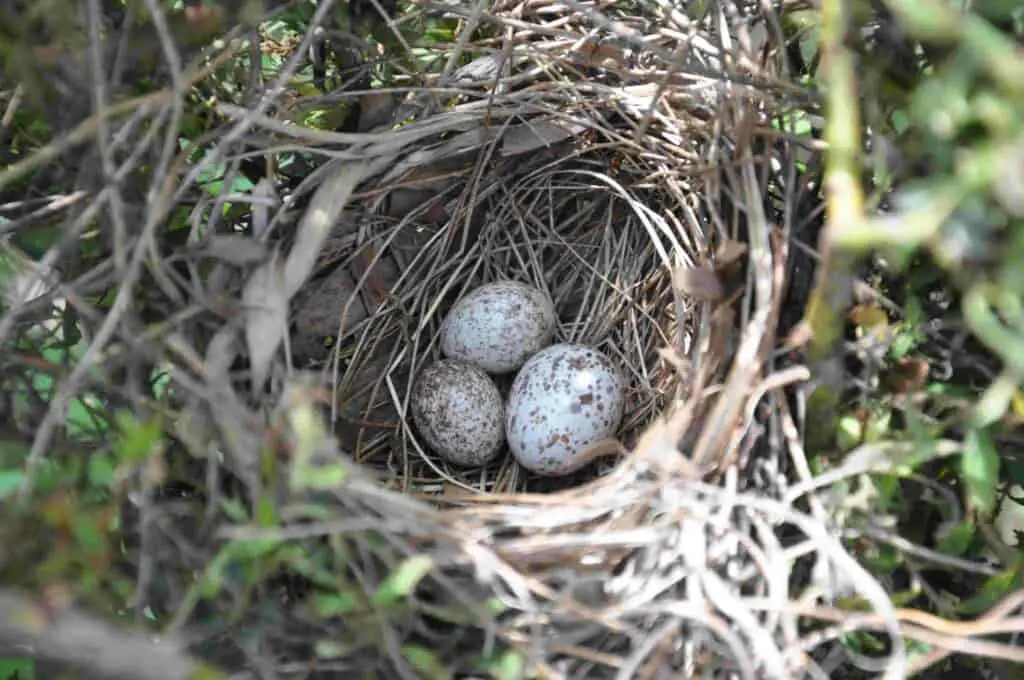
Female cowbirds are grayish brown overall and have a finely streaked belly. The male is a glossy black with a brown head. Both have stout, conical bills.
Cowbird eggs hatch faster than the host eggs and the young cowbirds develop faster. Cowbird young are usually larger than their nestmates and will outcompete them for food, at the expense of the host chicks. The young cowbirds may push the other eggs out of the nest or smother their nestlings in the bottom of the nest.
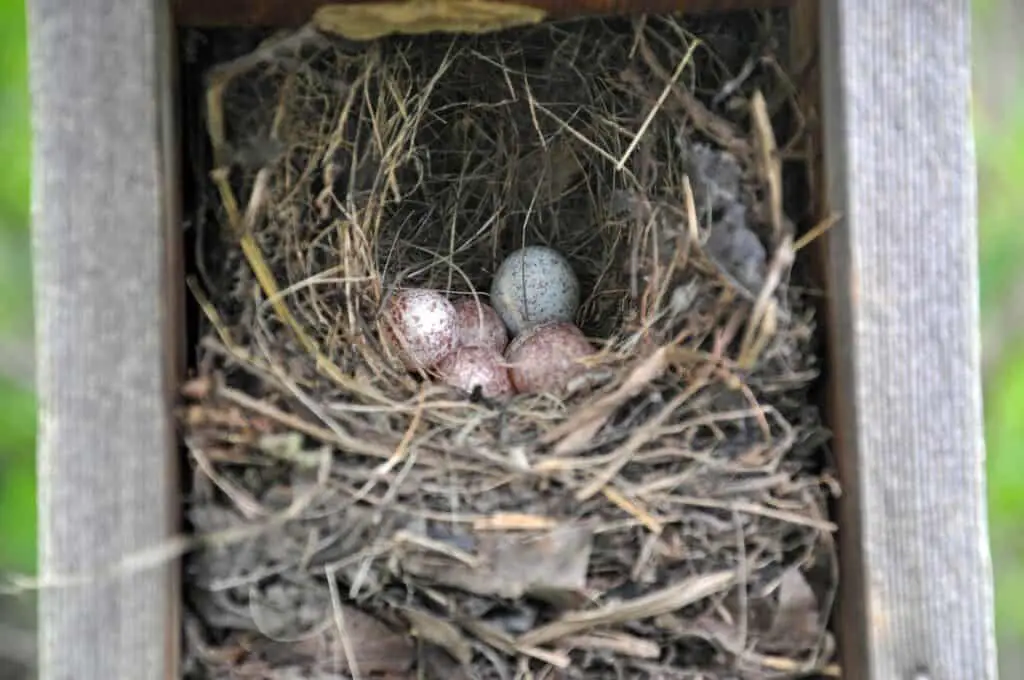
During the spring nesting season, I check our bird boxes weekly and discard any cowbird eggs I find.
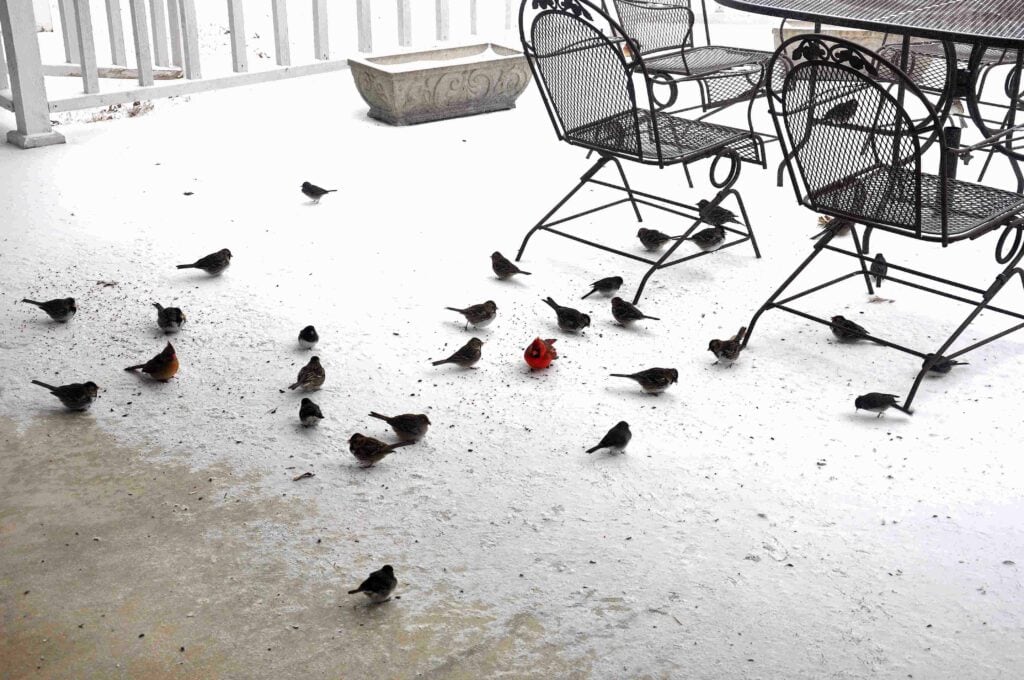
Frequently Asked Questions about Cowbirds
What are cowbirds?
Cowbirds, specifically the Brown-headed Cowbird (Molothrus ater), are a species of blackbird native to North America. They are known for their unique reproductive strategy called brood parasitism, where they lay their eggs in the nests of other bird species instead of building their own nests12.
How do cowbirds reproduce?
Female cowbirds do not construct nests. Instead, they search for the nests of other birds, often removing one of the host’s eggs before laying one of their own. This allows the host parents to raise the cowbird chicks, usually at the expense of their own offspring24. Cowbirds can lay a significant number of eggs—up to 40 in a season—and they often target over 220 different bird species as hosts14.
What do cowbird eggs look like?
Cowbird eggs are typically white to grayish-white with brown or gray spots. They are sometimes larger than the eggs of the host species, making them identifiable23. The incubation period for cowbird eggs is about 10-12 days, and the chicks develop rapidly, fledging in approximately 8-13 days3.
What do cowbirds eat?
Brown-headed Cowbirds primarily feed on seeds from grasses and weeds, as well as insects such as grasshoppers and beetles. They are often found foraging on the ground, especially in areas disturbed by livestock, which flushes insects for them to catch34.
Where can cowbirds be found?
Cowbirds thrive in various habitats including open grasslands, agricultural fields, urban areas, and suburban environments. Their populations have increased due to habitat changes caused by human activities such as agriculture and urban development23.
Are cowbirds harmful to other bird species?
Yes, cowbirds are often viewed as a nuisance because their brood parasitism can lead to declines in populations of smaller songbird species. Many host birds may unknowingly raise cowbird chicks at the expense of their own young14. Some studies suggest that this behavior has contributed to population declines in certain endangered species1.
How do other birds react to cowbird eggs?
Some host species can recognize cowbird eggs and may attempt to remove them or build a new nest over the existing one. However, many birds do not recognize cowbird eggs at all and will raise them alongside their own chicks12.
What is the lifespan of a cowbird?
The oldest recorded Brown-headed Cowbird was nearly 17 years old when it was recaptured during banding operations in Wisconsin1.
Citations:
- https://www.allaboutbirds.org/guide/Brown-headed_Cowbird/overview
- https://nestwatch.org/learn/general-bird-nest-info/brown-headed-cowbirds/
- https://www.allaboutbirds.org/guide/Brown-headed_Cowbird/lifehistory
- https://www.audubon.org/field-guide/bird/brown-headed-cowbird
- https://seabrookislandbirders.org/2023/03/16/ask-sib/
- https://awaytogarden.com/birdnote-qa-the-much-maligned-brown-headed-cowbird/
- https://forums.whatbird.com/index.php
- https://www.reddit.com/r/Ornithology/comments/1c84nh8/concern_or_not_cowbirds/
Answer from Perplexity: pplx.ai/share
